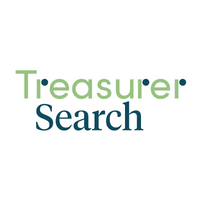What is a cross-currency transaction?
Cross-currency transactions, involving the movement of funds between distinct global currencies, present unique challenges and opportunities for corporate treasurers operating internationally. As foreign exchange (FX) rates continuously fluctuate due to market dynamics, understanding and managing FX risks becomes essential for maintaining financial stability and seizing international opportunities.
Defining Cross-Currency Transactions:
What exactly is a cross-currency transaction, you might ask? It’s about the movement of funds between two distinct currencies. Let’s delve into the complexities of cross-currency transactions and explore how companies can manage risk to seize international opportunities. This concept covers various scenarios where companies deal with multiple currencies, such as:
- International sales and purchases: A cross-currency transaction occurs to settle the payment when a company imports or exports goods or services denominated in a foreign currency.
- Foreign investments: Investments in assets or subsidiaries located in different countries necessitate currency conversion.
- Hedging other financial instruments: Companies may use derivatives like forwards, swaps, or options to manage risk on future cash flows denominated in foreign currencies.
Impacts of FX Rates on Cross-Currency Transactions:
Regarding cross-currency transactions, foreign exchange (FX) rates play a significant role. These rates, which fluctuate based on market supply and demand, can have a significant impact on various aspects of business operations.
The impact of FX on Transaction Costs:
A strong foreign currency can drive up import costs, potentially eating into profit margins. On the flip side, a weaker currency can make exports more competitive, but it might also affect the repatriation of foreign earnings.
The impact of FX on Financial Reporting:
For companies with international operations, translating financial statements using current FX rates can lead to unrealized foreign exchange gains or losses, which in turn can influence reported profitability.
The Impact of FX on Budgeting and Forecasting:
Exchange rate fluctuations can pose challenges to accurate budgeting and forecasting. Anticipated revenues and expenses in foreign currencies are subject to the volatility of exchange rates, making it harder to predict future financial outcomes.
Managing Currency Risk:
Managing currency risk is critical for companies operating in multiple countries. By staying informed and proactive, companies can more effectively manage the complexities of cross-currency transactions. It’s important to understand the extent of your currency exposure and work towards a structured risk management policy.
One strategy is natural hedging, which involves matching cash flows in opposite currencies to offset gains and losses. However, this approach may restrict business opportunities or require strategic planning. Another strategy is forward contracts, which commit to a currency rate today for a future exchange, mitigating volatility but restricting flexibility if rates become more favorable.
Foreign currency options grant the right, but not the obligation, to buy or sell a currency at a set price by a certain date, offering flexibility but coming with a premium cost. Money market swaps involve exchanging principal and interest payments in different currencies to lock in favorable rates and manage exposure over longer periods.
Structural measures, such as diversifying operations, invoicing in stronger currencies, and negotiating price flexibility with suppliers, can help reduce reliance on specific currencies. Additionally, companies can focus on the risk to P&L, not the rate, and avoid transacting in partially convertible currencies where governments limit the amount that can exit or enter the country.
By taking these steps, businesses can minimize the impact of currency fluctuations on their
operations and protect themselves from potential losses. It’s important to remember that there is no one-size-fits-all approach to managing currency risk, and companies should work with their financial advisors to develop a customized strategy that aligns with their specific needs and goals.
In search of an expert in Cross-Currency Hedging?
One of the noteworthy entities in the FX hedging arena is Grain. It offers an API-based cross-currency solution that is fully embeddable and specifically designed for software platforms and marketplaces. Grain stands out by not only safeguarding these platforms and marketplaces against currency risk but also enabling them to extend currency risk protection to their end users, thereby achieving a competitive edge. The technology behind Grain is AI-powered, supporting the entire lifecycle of a hedging transaction—from initiation through to cash settlement. This includes accommodating cancellations and refunds, streamlining the process for its users.
Conclusion:
In conclusion, mastering cross-currency transactions and understanding FX risks and strategies is essential for corporate treasurers to ensure financial stability and success in global markets. Visit Grain to learn more about the solution.












